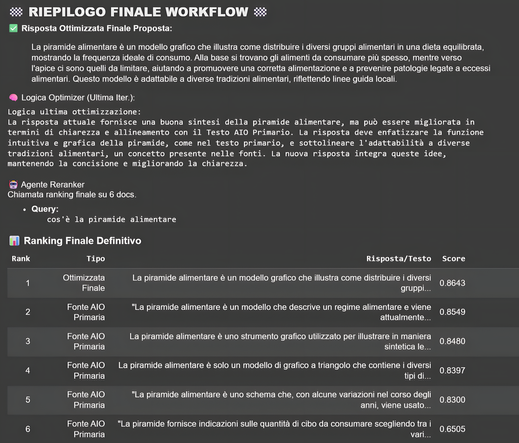Paid subscriptions to generative AI services in South Korea soared from 0.9% to 7% last year, with one in four citizens now using AI tools, according to a government survey.
#YonhapInfomax #GenerativeAI #PaidSubscription #KoreaCommunicationsCommission #UserSurvey #ChatGPTUsage #Economics #FinancialMarkets #Banking #Securities #Bonds #StockMarket
https://en.infomaxai.com/news/articleView.html?idxno=65265
#Generativeai
reCAPTCHA: Verify you are human by selecting all images below that match this species <AI-slop image of a dog>.
Me: bulldog, chihuahua, something with fur and sunglasses that looks as though it's escaped from a David Cronenberg film, avocado. <laugh-groans awkwardly and clicks the "Submit" button>
reCAPTCHA: Excellent, human, you may proceed!
#CAPTCHA #reCAPTCHA #Security #AI #GenerativeAI #AISlop #Enshittification
“Extraordinarily expensive”: Costs force Getty to pick its AI legal battles https://arstechni.ca/eXJ6 #ArtificialIntelligence #imagegenerators #StableDiffusion #generativeai #GettyImages #StabilityAI #copyright #fairuse #Policy #AI
Moderna just took a bold step into the AI age — merging HR and IT into a single role: Chief People and Digital Technology Officer.
Why? Because in a world where AI and people collaborate to get work done, it no longer makes sense to manage them in silos.
This move signals a broader shift. Companies like Shopify are rethinking open roles in light of AI capabilities. Moderna is showing what that looks like in practice.
Gift link: https://www.wsj.com/articles/why-moderna-merged-its-tech-and-hr-departments-95318c2a?st=DzGSWt
@artificialintelligencenews.in 👋 Hello
We’re Author AI, the first AI built specifically for long-form writing. Think novels, screenplays, technical manuals, but with structure at scale.
We’re not here to replace the human author. We’re here to support those with powerful stories, but limited time, resources, or access to craft training.
We'd love to share some of our work with you for your review!
"Mistral's announcement captures the essential features that all of the LLM vendors have started to converge on for these "agentic" systems:
- Code execution, using Mistral's new Code Interpreter mechanism. It's Python in a server-side sandbox - OpenAI have had this for years and Anthropic launched theirs last week.
Image generation - Mistral are using Black Forest Lab FLUX1.1 [pro] Ultra.
- Web search - this is an interesting variant, Mistral offer two versions: web_search is classic search, but web_search_premium "enables access to both a search engine and two news agencies: AFP and AP". Mistral don't mention which underlying search engine they use but Brave is the only search vendor listed in the subprocessors on their Trust Center so I'm assuming it's Brave Search. I wonder if that news agency integration is handled by Brave or Mistral themselves?
- Document library is Mistral's version of hosted RAG over "user-uploaded documents". Their documentation doesn't mention if it's vector-based or FTS or which embedding model it uses, which is a disappointing omission.
- Model Context Protocol support: you can now include details of MCP servers in your API calls and Mistral will call them when it needs to. It's pretty amazing to see the same new feature roll out across OpenAI (May 21st), Anthropic (May 22nd) and now Mistral (May 27th) within eight days of each other!"
"I’ve been tracking llm-tool-use for a while. I first saw the trick described in the ReAcT paper, first published in October 2022 (a month before the initial release of ChatGPT). I built a simple implementation of that in a few dozen lines of Python. It was clearly a very neat pattern!
Over the past few years it has become very apparent that tool use is the single most effective way to extend the abilities of language models. It’s such a simple trick: you tell the model that there are tools it can use, and have it output special syntax (JSON or XML or tool_name(arguments), it doesn’t matter which) requesting a tool action, then stop.
Your code parses that output, runs the requested tools and then starts a new prompt to the model with the results.
This works with almost every model now. Most of them are specifically trained for tool usage, and there are leaderboards like the Berkeley Function-Calling Leaderboard dedicated to tracking which models do the best job of it.
All of the big model vendors—OpenAI, Anthropic, Google, Mistral, Meta—have a version of this baked into their API, either called tool usage or function calling. It’s all the same underlying pattern.
The models you can run locally are getting good at this too. Ollama added tool support last year, and it’s baked into the llama.cpp server as well.
It’s been clear for a while that LLM absolutely needed to grow support for tools. I released LLM schema support back in February as a stepping stone towards this. I’m glad to finally have it over the line.
As always with LLM, the challenge was designing an abstraction layer that could work across as many different models as possible. A year ago I didn’t feel that model tool support was mature enough to figure this out. Today there’s a very definite consensus among vendors about how this should work, which finally gave me the confidence to implement it."
https://simonwillison.net/2025/May/27/llm-tools/
#AI #GenerativeAI #LLMs #CLI #Python #OpenAI #Anthropic #Google #Programming
Good Apples and Bad Apples – DTNSB 5028
Plus the good and the bad of Audible using generated voices.
Starring Tom Merritt, Jenn Cutter, and Andy Beach.
Follow us on Bluesky, Mastodon, X Instgram, Threads, YouTube and Twitch
Please SUBSCRIBE HERE for free or get DTNS ad-free.
A special thanks to all our supporters–without you, none of this would be possible.
If you enjoy what you see you can support the show on Patreon, Thank you!
Send to email to feedback@dailytechnewsshow.com
Show Notes
- Digital Trends – Apple Acquires RAC7, Maker of Sneaky Sasquatch
- Bloomberg – Apple to Debut Gaming App Near Switch 2 Launch
- 9to5Mac – Apple Faces 30-Day DMA Deadline
- EU Commission – DMA Case Document (PDF)
- MacRumors – Apple Launches iPad Self-Service Repair
- 9to5Mac – iPhone 16 Becomes World’s Best-Selling Smartphone
- Wikipedia – List of Best-Selling Mobile Phones
- TechCrunch – Anthropic Launches Voice Mode for Claude
- Engadget – Web Search Comes to Free Claude Users
- The Verge – Microsoft’s Unified App Update Platform
- PCMag – Microsoft to Centralize App Updates
- TechCrunch – Opera’s AI Browser Codes for You
- Bloomberg – Texas Passes Online Child Safety Bill
- Yahoo Finance – Shein Eyes Hong Kong IPO
- Semafor – Temu & Shein Reshape African E-commerce
- TechCrunch – xAI to Invest in Telegram, Integrate Grok
- Bloomberg – BCE to Build AI Data Center Network
- The Register – Opinion: AI Model Collapse Looming?
- Reddit – r/DailyTechNewsShow
- DTNS – Support DTNS on Patreon
#AfricanECommerce #agenticBrowser #AIAudiobookNarration #AIDataCenters #AIModelCollapse #Anthropic #antitrust #AppStore #appUpdates #Apple #Audible #BCE #BellCanada #chatbotIntegration #Claude #CounterpointResearch #DigitalMarketsAct #DMA #EUCommission #GameCenter #generativeAI #Grok #Groq #Instapaper #iPad #iPhone16 #IPO #Jumia #Microsoft #onlineSafetyLaw #Opera #OperaNeon #parentalControls #PocketAlternative #RAC7 #selfServiceRepair #Shein #smartphoneSales #SneakySasquatch #syntheticData #Telegram #Temu #Texas #videoGames #voiceMode #webSearch #WindowsUpdate #xAI
Netflix Founder Reed Hastings Joins Board of AI Giant Anthropic
#Business #Digital #Anthropic #GenerativeAI #ReedHastings
Have journalists skipped the ethics conversation when it comes to using AI?
#Tech #AI #Journalism #AIInJournalism #JournalismEthics #MediaTrust #AITransparency #Newsroom #AIEthics #GenerativeAI #AIAndNews #FutureOfJournalism #ResponsibleAI #NewsReporting
https://the-14.com/have-journalists-skipped-the-ethics-conversation-when-it-comes-to-using-ai/
Google’s Veo 3 Nails the Infamous Will Smith Eating Spaghetti Test https://petapixel.com/2025/05/28/googles-veo-3-nails-the-infamous-will-smith-eating-spaghetti-test/ #willsmitheatingspaghetti #marquesbrownlee #generativeai #Technology #googleveo3 #willsmith #News #veo3
Don't rely on CoT as a mechanism for AI interpretability or safety. https://www.marktechpost.com/2025/05/19/chain-of-thought-may-not-be-a-window-into-ais-reasoning-anthropics-new-study-reveals-hidden-gaps/ #DataScience #GenerativeAI #LLM
KI im Editor: Smarte Prompts für bessere Inhalte
Jan Mevissen zeigt, wie Redakteur*innen in Plone 6 mit integrierter KI und einem flexiblen Prompt-Management arbeiten – effizient, barrierefrei und zielgruppengerecht.
https://tagung.plone.de/2025/nachrichten/ki-im-editor-smarte-prompts-fuer-bessere-inhalte
#PloneTagung #Plone #CMS #KI #GenerativeAI #PromptManagement #Redaktion #UX
KI-Update kompakt: ChatGPT, KI-Gigafactory, Mistral AI, Spaitial
Das "KI-Update" liefert werktäglich eine Zusammenfassung der wichtigsten KI-Entwicklungen.
#ChatGPT #GenerativeAI #KünstlicheIntelligenz #Journal #KIUpdate #Rechenzentrum #IdentityManagement #Wissenschaft #news
Check out the best generative AI tools of 2025: https://lttr.ai/Ae7Gd
#generativeai #chatgpt #aiart #midjourneyalternative #chatgptalternatives
Stay sharp! Subscribe for free tips and resources > https://teracore.co.za/?ff_landing=10
European Publishers Council stays true – to the tired old trope about “copyright theft”
A few weeks ago Walled Culture explored how the leaders in the generative AI world are trying to influence the future legal norms for this field. In the face of a powerful new form of an old technology – AI itself has been around for over 50 years – those are certainly needed. Governments around the world know this too: they are grappling with the new issues that large language models […]
#adtech #advertising #artificialIntelligence #bbc #bots #contextualAdvertising #eu #euipo #europeanPublishersCouncil #factChecking #genai #generativeAi #guardian #journalism #licensing #llms #searchEngines #slogan #training #uk #usCopyrightOffice
"Much of the assertion that #Altman and #Schmidt make about #generativeAI helping with #climatechange is built on the notion that the technology underlying #ChatGPT will soon get so smart, because of all the data it’s taking in, that it will surpass human intelligence and will be able to come up with ideas that humans couldn’t.
But such advocates don’t ever really explain how a technology that’s #notsentient and doesn’t have any real notion of the actual physical world will somehow evolve into what they like to call artificial general intelligence, said @emilymbender and #AlexHanna, co-authors of the new book “The #AICon: How to Fight Big Tech’s Hype and Create the Future We Want.”
🧠 #AIOverviews e #AIMode. Leggo diversi post che affermano che i progetti in cui c'è stato un lavoro strutturato sui contenuti sono presenti nelle risposte generate senza sforzi ulteriori.
👉 Questo è normale. Alcune considerazioni: https://www.linkedin.com/posts/alessiopomaro_aioverviews-aimode-google-activity-7333448937325985793-ABxm
___
✉️ 𝗦𝗲 𝘃𝘂𝗼𝗶 𝗿𝗶𝗺𝗮𝗻𝗲𝗿𝗲 𝗮𝗴𝗴𝗶𝗼𝗿𝗻𝗮𝘁𝗼/𝗮 𝘀𝘂 𝗾𝘂𝗲𝘀𝘁𝗲 𝘁𝗲𝗺𝗮𝘁𝗶𝗰𝗵𝗲, 𝗶𝘀𝗰𝗿𝗶𝘃𝗶𝘁𝗶 𝗮𝗹𝗹𝗮 𝗺𝗶𝗮 𝗻𝗲𝘄𝘀𝗹𝗲𝘁𝘁𝗲𝗿: https://bit.ly/newsletter-alessiopomaro
🤖✨ Being the head of the Natural Language Processing Laboratory at EPFL, Antoine Bosselut keeps a close eye on the development of generative artificial intelligence tools such as ChatGPT. He looks back at their evolution over the past two years and suggests some avenues for the future.
#NaturalLanguageProcessing #GenerativeAI #LanguageTechnology
Read more: https://go.epfl.ch/sUC-en




